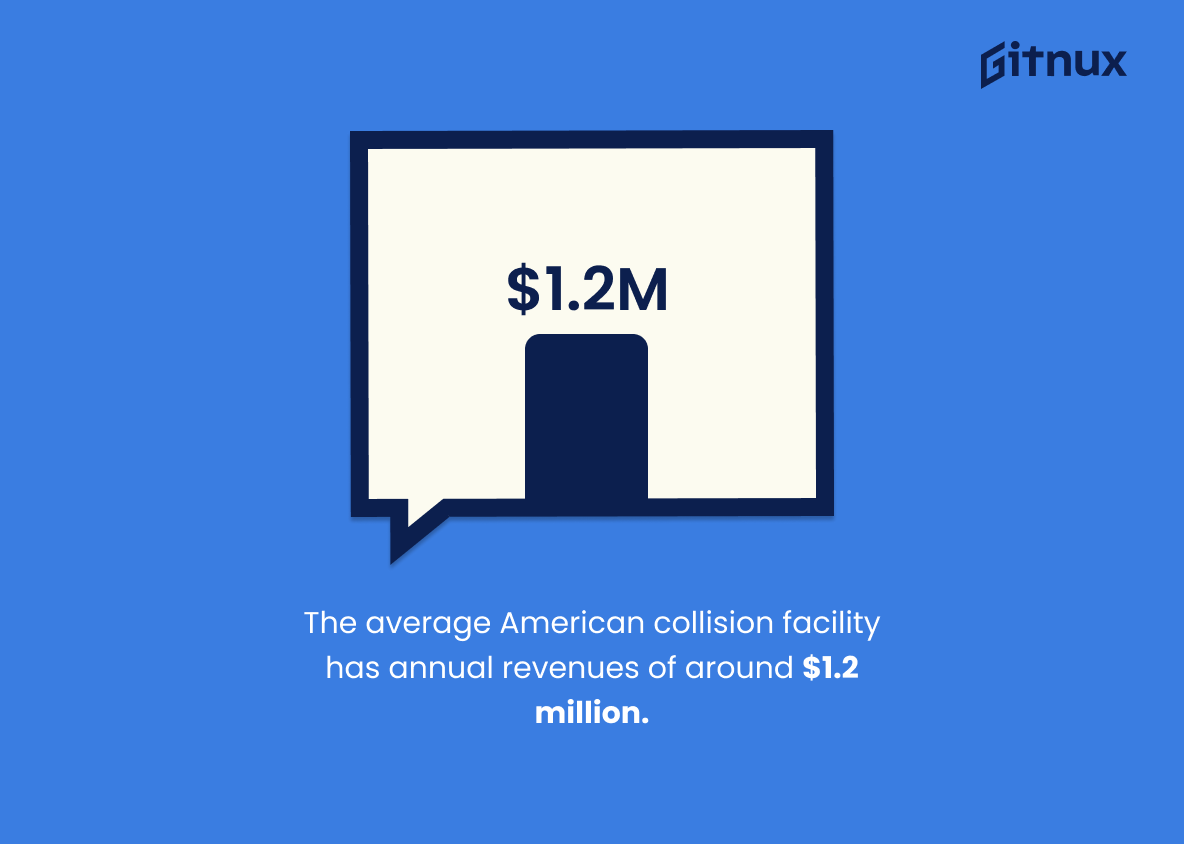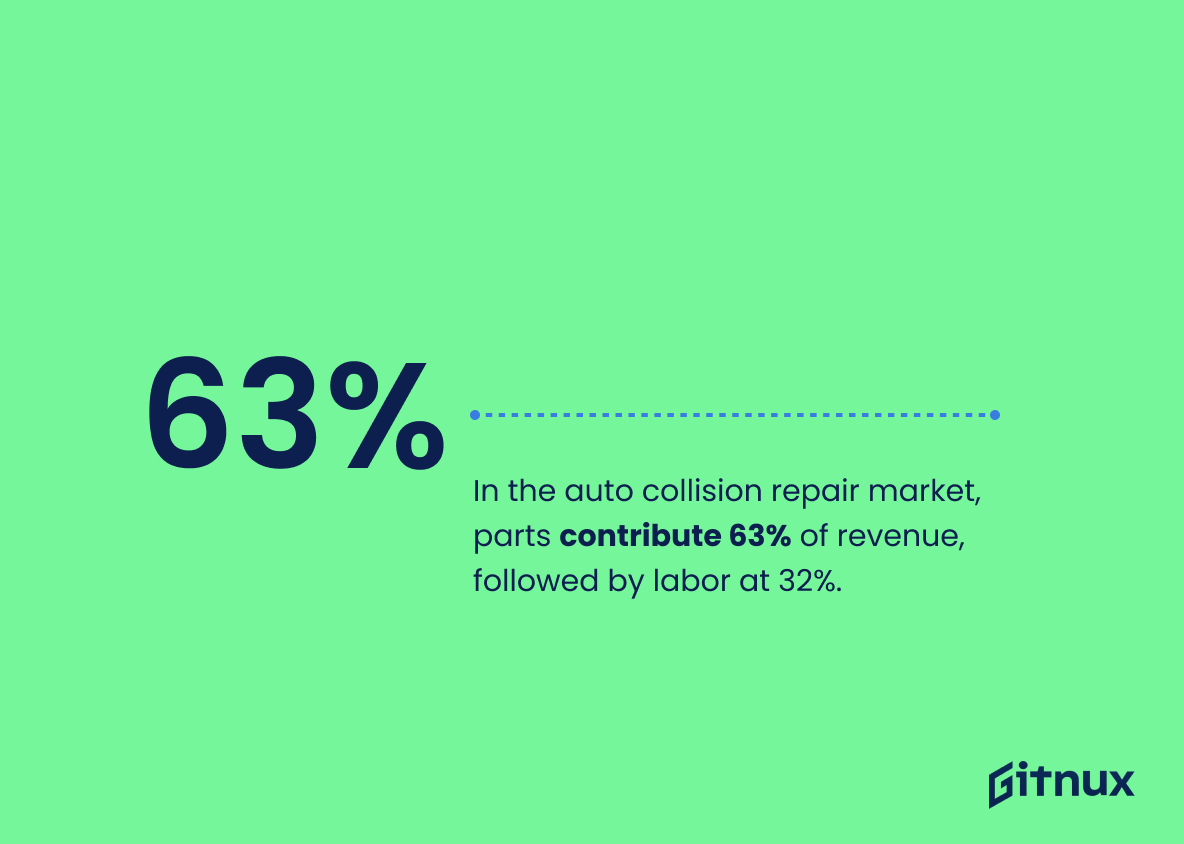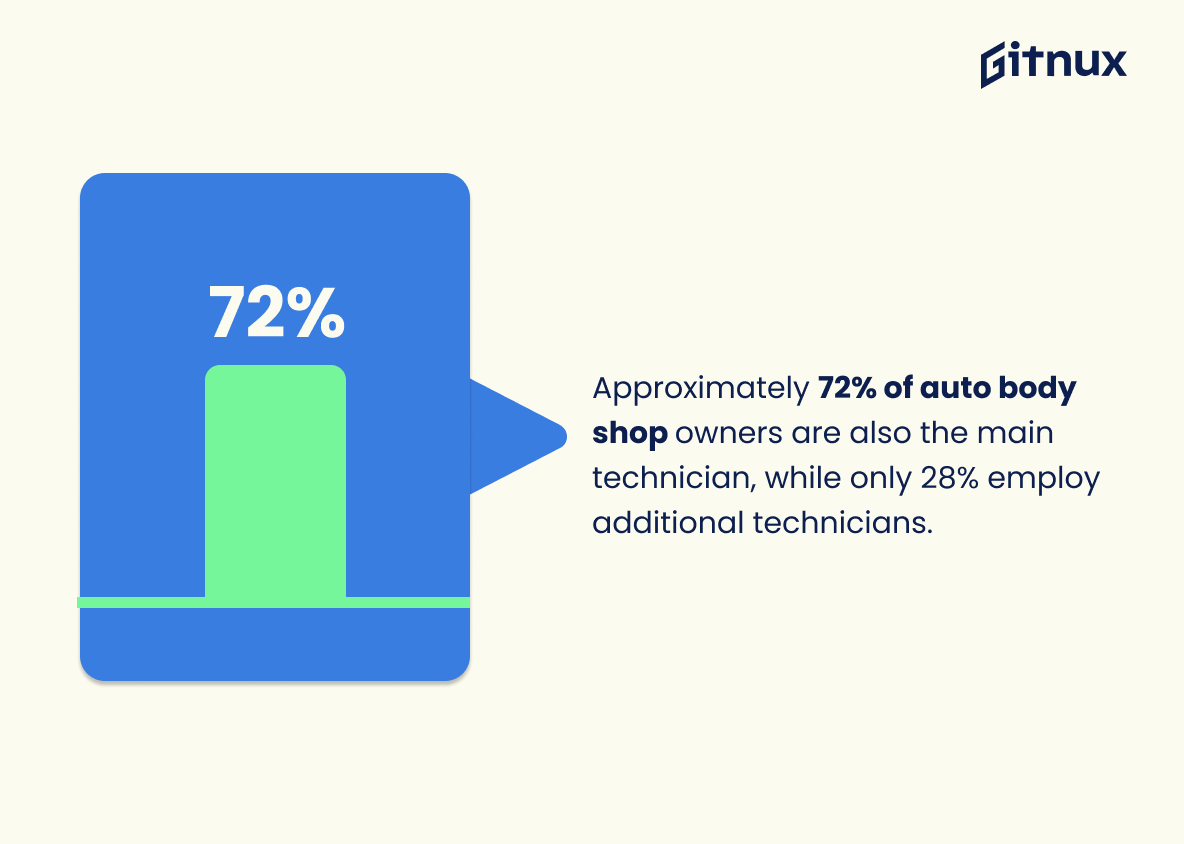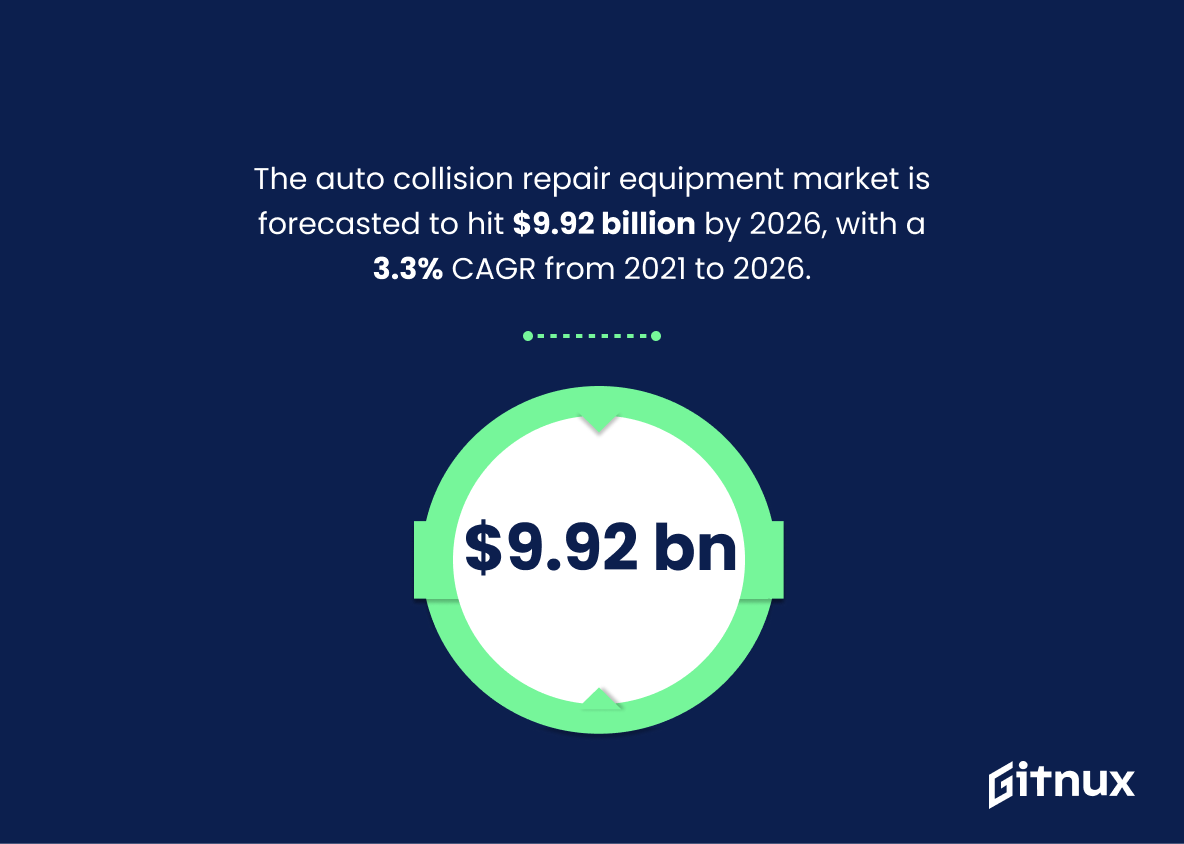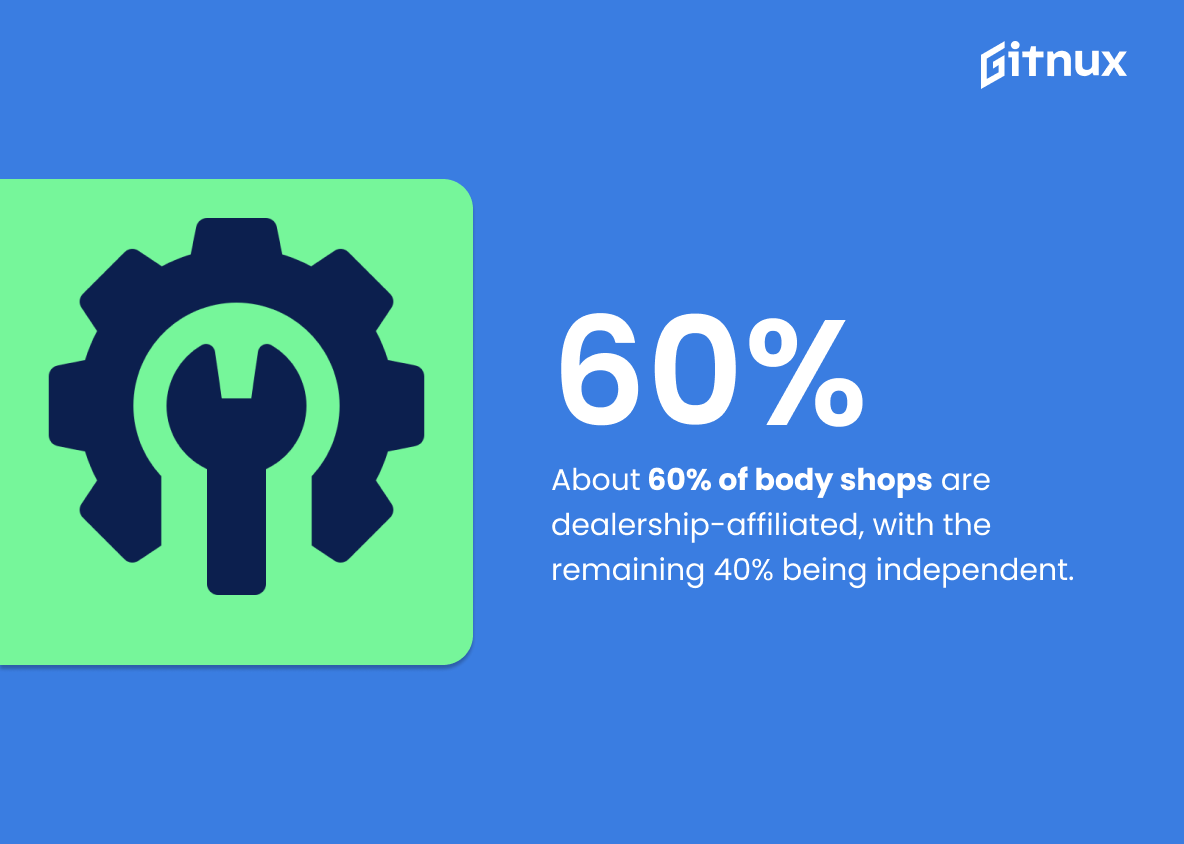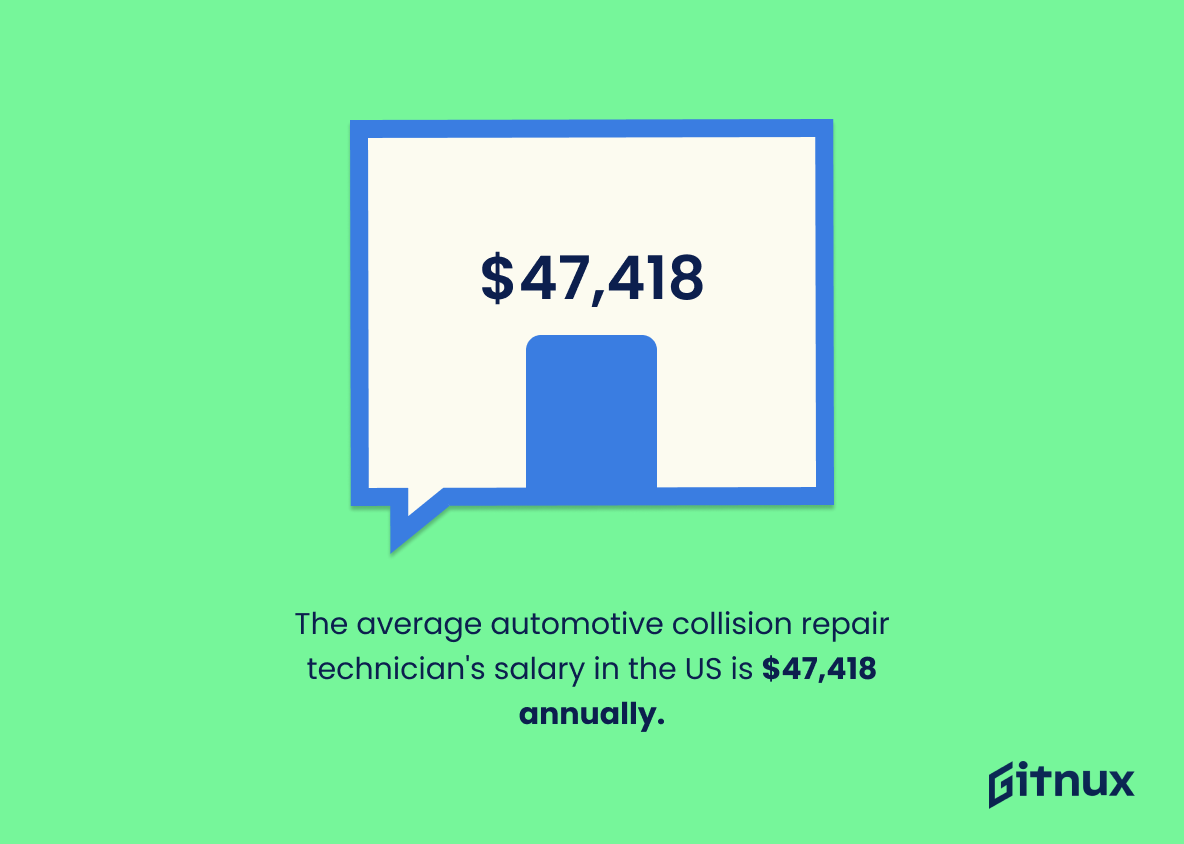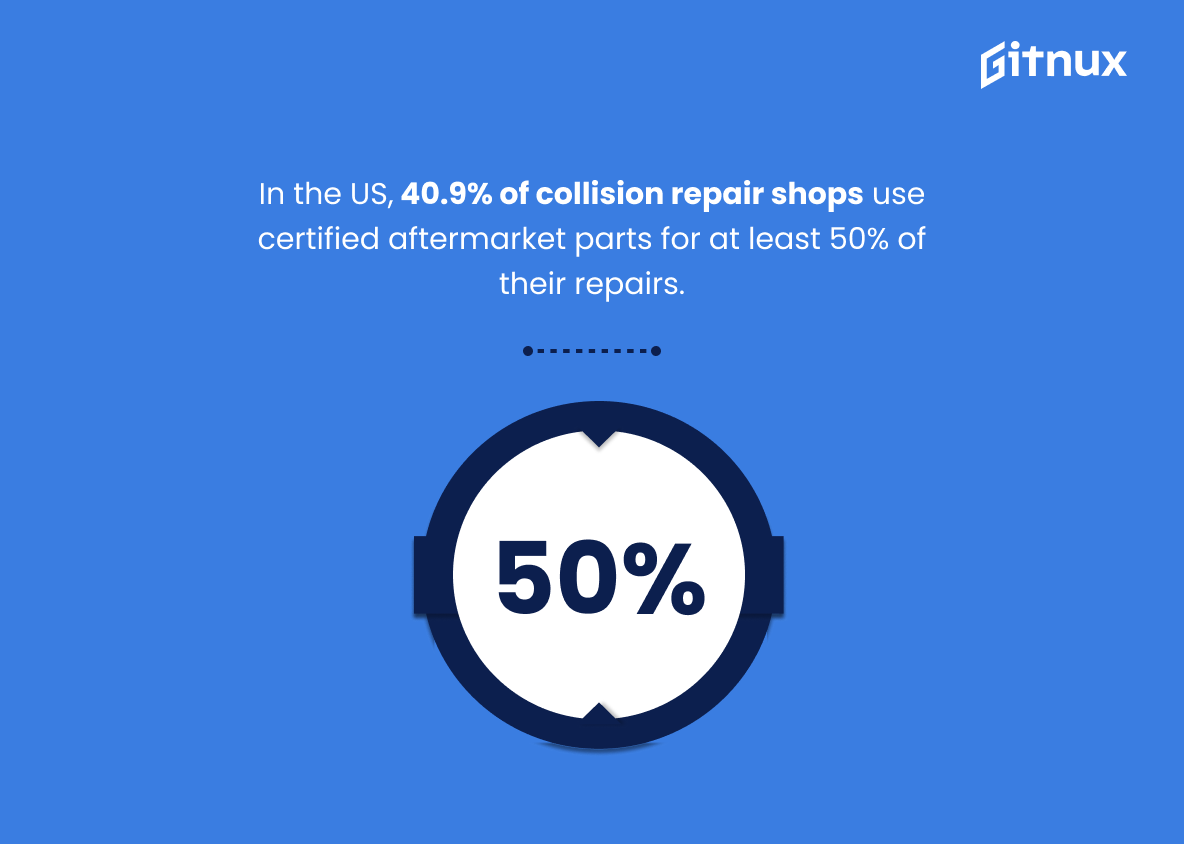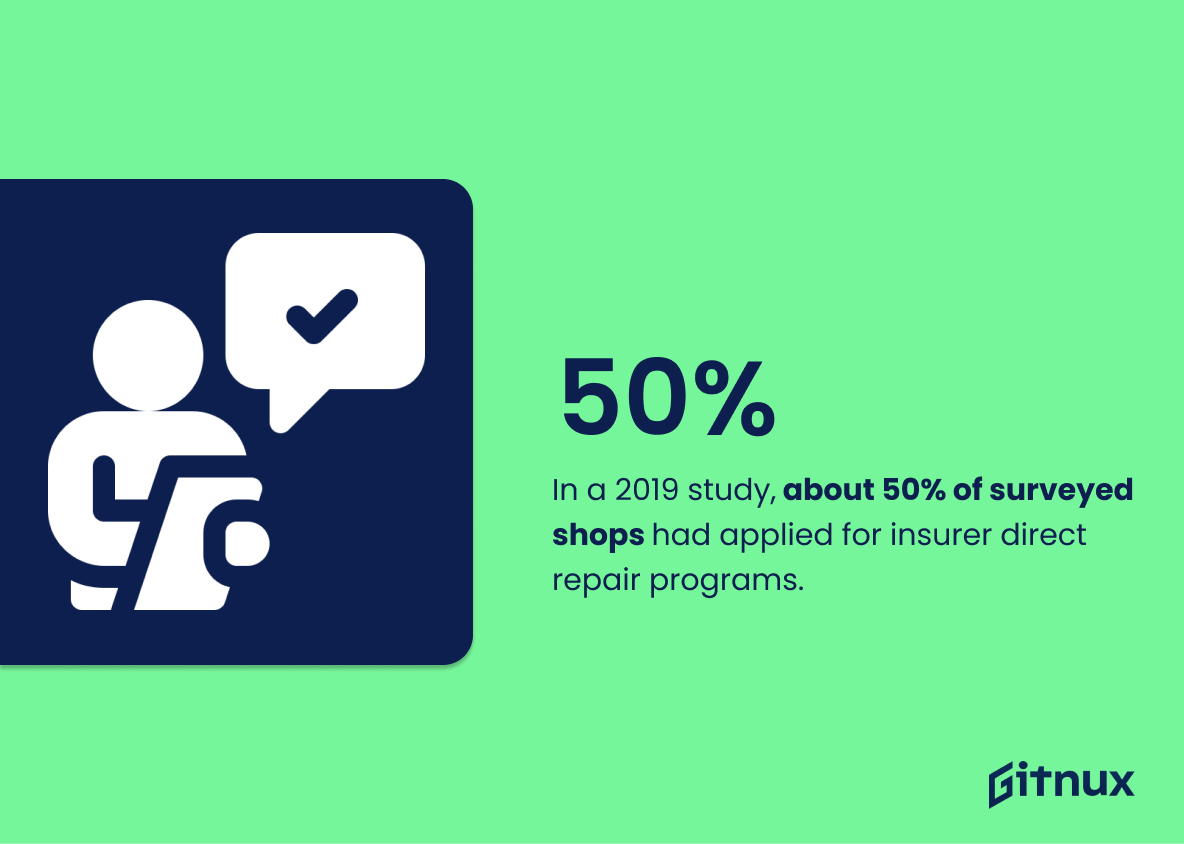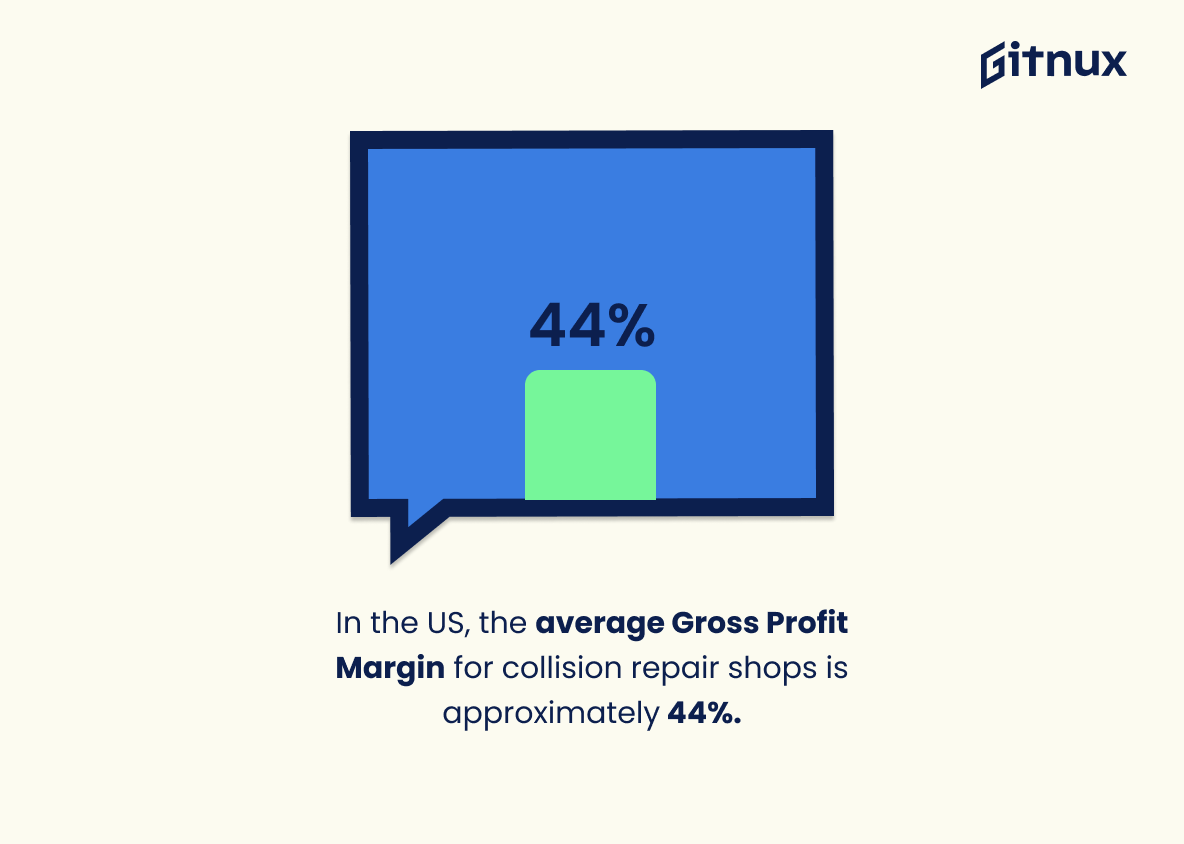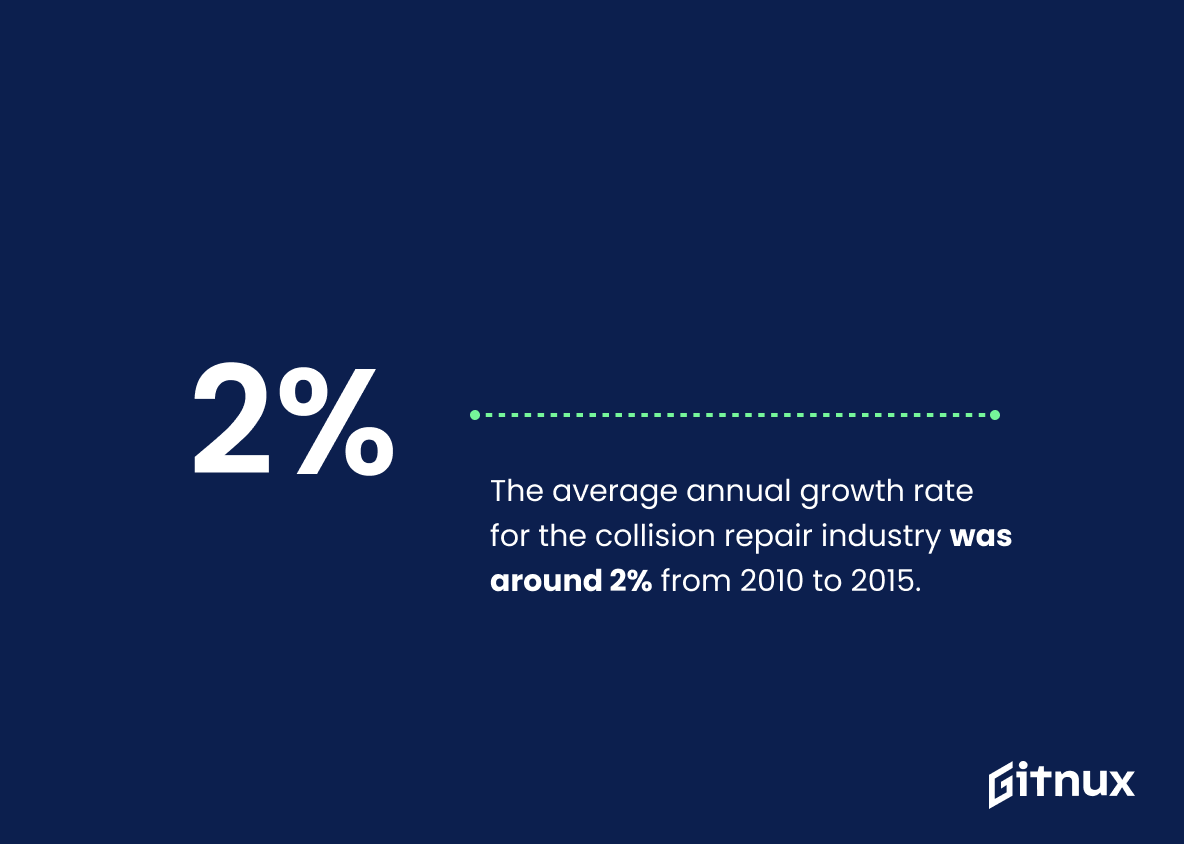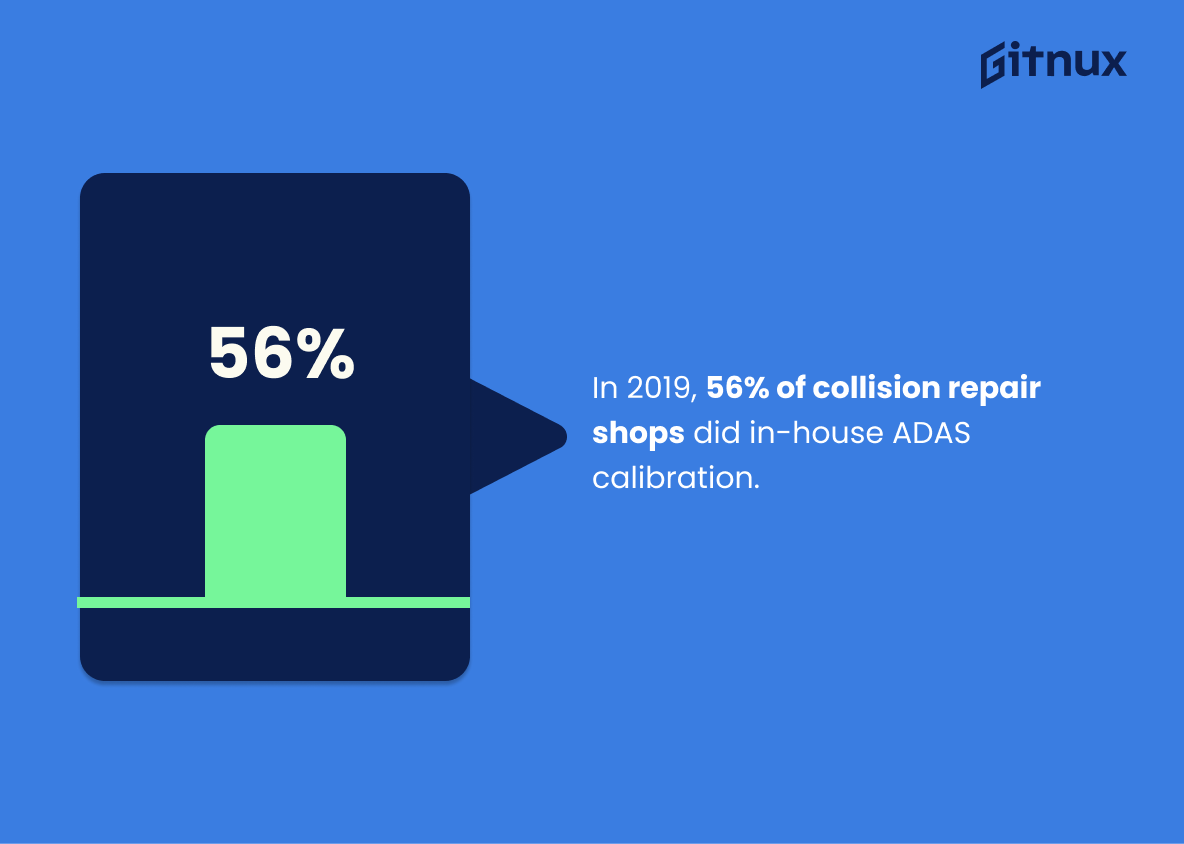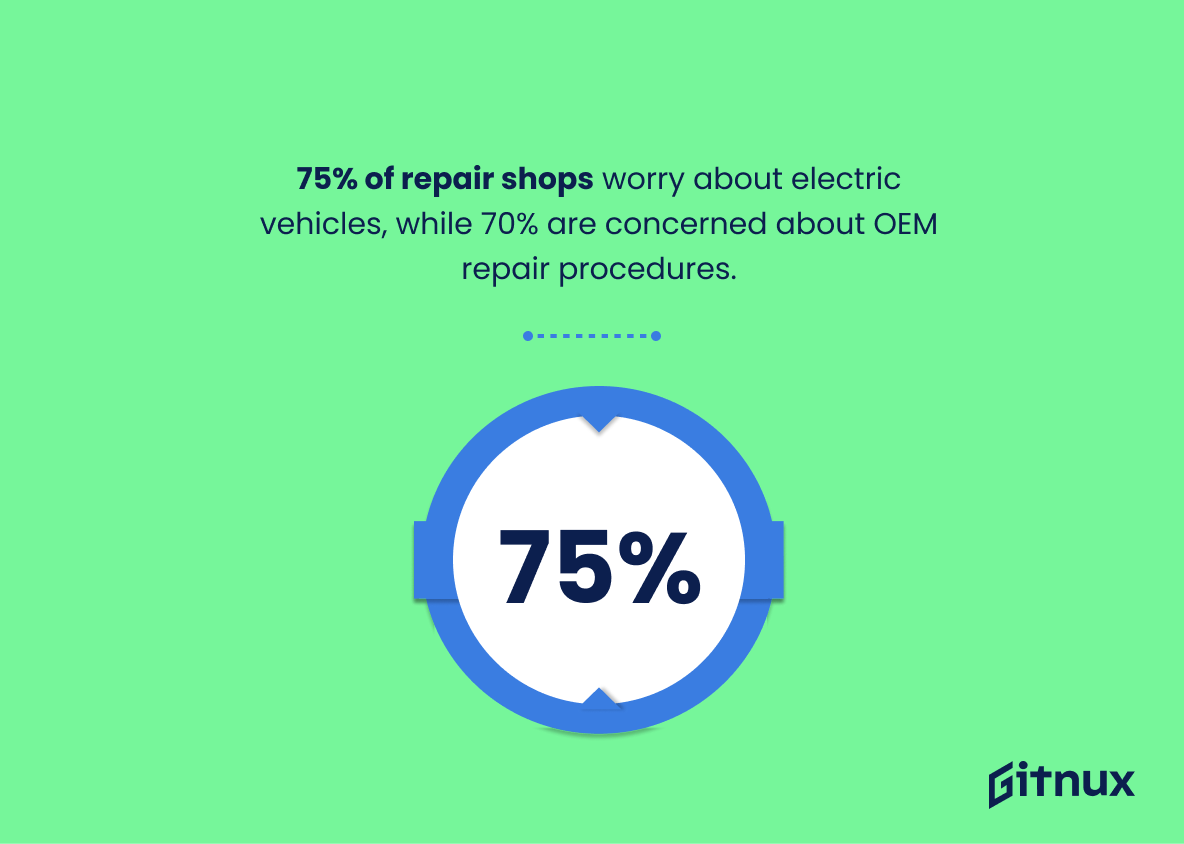The collision repair industry is a rapidly evolving sector that has seen significant growth in recent years. According to Grand View Research, the global automotive collision repair market size was valued at USD 176.2 billion in 2018 and is expected to grow at a compound annual growth rate (CAGR) of 2.5% from 2020 to 2027. In the US alone, there are over 130,000 people employed across approximately 35,000 facilities with average revenues of around $1.2 million per facility annually according to IBISWorld research data.
Parts account for 63% of total revenue within this industry followed by labor at 32%, paint and other materials making up 5%. Additionally, 72% of auto body shop owners act as their own main technician while only 28% employ additional technicians according to statistics from the U.S Department Of Commerce’s Bureau Of Economic Analysis report on Collision Repair Industry Statistics 2019-2020 Edition . The market for automotive collision repair equipment is also projected reach $9.92 billion by 2026 with an estimated 15 % job openings increase by 2026 according to BLS Occupational Outlook Handbook Report 2021 – 2022 edition .
This blog post will explore further into these key statistics related specifically towards the Automotive Collision Repair Market including insights such as certified aftermarket parts usage , OEM procedures concerns , electric/hybrid vehicle emergence fears & return on investment averages among others .
This statistic serves as a testament to the immense size of the global automotive collision repair market. It highlights the sheer magnitude of the industry, and the potential for growth and development within it. It also serves as a reminder of the importance of the collision repair industry, and the need for continued investment in it.
The collision repair industry is expected to grow at a compound annual growth rate (CAGR) of 2.5% from 2020 to 2027.
This statistic is a crucial indicator of the future of the collision repair industry, providing insight into the potential for growth and expansion over the next seven years. It is an essential piece of information for anyone interested in the industry, as it can help inform decisions about investments, hiring, and other business strategies. With a projected CAGR of 2.5%, the collision repair industry is poised to experience steady growth in the coming years, making it an attractive option for those looking to enter the field.
Collision Repair Industry Statistics Overview
The collision repair industry in the US includes over 130,000 people employed across approximately 35,000 facilities.
This statistic is a testament to the sheer size and scope of the collision repair industry in the US. With over 130,000 people employed across 35,000 facilities, it is clear that this is a major industry with a significant impact on the economy.
The average American collision facility has annual revenues of around $1.2 million.
This statistic is a telling indication of the size of the collision repair industry in the United States. It reveals that the average American collision facility is a significant contributor to the economy, with annual revenues of around $1.2 million. This statistic is a valuable insight into the financial health of the industry and provides a useful benchmark for comparison.
The largest revenue segment in the automotive collision repair market is parts at 63%, followed by labor at 32% and paint and other materials at 5%.
This statistic is a crucial insight into the Collision Repair Industry, as it reveals the breakdown of the market’s revenue sources. It shows that the majority of the industry’s income is generated from parts, with labor and paint and other materials making up the remainder. This information is invaluable for anyone looking to understand the financial dynamics of the Collision Repair Industry.
Approximately 72% of auto body shop owners are also the main technician, while only 28% employ additional technicians.
This statistic is indicative of the fact that the collision repair industry is largely composed of small businesses, with the majority of owners taking on the role of technician as well. This speaks to the entrepreneurial spirit of the industry, as well as the challenges that come with running a small business. It also highlights the importance of having a skilled technician in the shop, as the majority of owners are taking on this role themselves.
The market for automotive collision repair equipment is expected to reach $9.92 billion by 2026, with a CAGR of 3.3% from 2021 to 2026.
This statistic is a testament to the growth of the collision repair industry, indicating that the market for automotive collision repair equipment is expected to expand significantly over the next five years. With a CAGR of 3.3%, this statistic is a clear indication that the collision repair industry is on the rise and is likely to remain a lucrative sector for years to come.
Approximately 60% of body shops are part of a dealership, while independent body shops account for the remaining 40%.
This statistic is a crucial insight into the collision repair industry, as it reveals the relative prevalence of dealership-affiliated body shops versus independent ones. It is important to note that the majority of body shops are part of a dealership, which could indicate that dealerships have a larger influence on the industry than independent shops. This could be significant for customers looking for collision repair services, as it could affect the availability and cost of services.
The average technician’s salary in the automotive collision repair industry is $47,418 per year in the US.
This statistic is a valuable insight into the financial realities of the automotive collision repair industry. It provides a tangible measure of the value of the work done by technicians in the industry, and serves as a benchmark for those considering a career in the field. It also serves as a reminder of the importance of investing in the training and development of technicians, as their salaries are a reflection of the quality of their work.
Technicians in the collision repair industry are in demand, with an estimated 15% growth in job openings by 2026.
This statistic is a beacon of hope for those looking to enter the collision repair industry, as it indicates that job openings are expected to increase by 15% in the next five years. This is great news for those seeking to pursue a career in this field, as it suggests that there will be plenty of opportunities available in the near future.
The paint materials segment of the collision repair market is projected to reach $9.9 billion by 2023.
This statistic is a testament to the immense potential of the collision repair market. It shows that the paint materials segment is expected to experience significant growth in the coming years, indicating that the industry is on the rise. This is great news for those involved in the collision repair industry, as it means that there is a strong demand for their services and products. Furthermore, this statistic serves as a reminder of the importance of staying up-to-date with the latest industry trends and developments in order to remain competitive.
In the US, 40.9% of collision repair shops report that certified aftermarket parts are used on at least half of their repairs.
This statistic is a telling indication of the prevalence of certified aftermarket parts in the US collision repair industry. It shows that a significant portion of repair shops are relying on these parts to complete their repairs, which speaks to the quality and reliability of these parts. This is an important factor to consider when discussing the collision repair industry, as it can have a major impact on the cost and quality of repairs.
A 2019 study found that approximately 50% of surveyed shops report having applied for insurer direct repair programs.
This statistic is significant in the context of collision repair industry statistics because it demonstrates the prevalence of insurer direct repair programs in the industry. It shows that a large portion of shops have taken advantage of these programs, which can help them to streamline their repair processes and provide better service to their customers. This statistic is a valuable insight into the current state of the collision repair industry and can help to inform decisions about how to best serve customers.
In the US, the average Gross Profit Margin for collision repair shops is approximately 44%.
The Gross Profit Margin for collision repair shops in the US is a telling statistic, as it provides insight into the financial health of the industry. It is a measure of how much money is left over after all expenses are paid, and can be used to gauge the overall profitability of the sector. This statistic is especially important for those looking to invest in the collision repair industry, as it can help them make informed decisions about where to put their money.
The average annual growth rate for the collision repair industry was around 2% from 2010 to 2015.
This statistic is a telling indication of the overall health of the collision repair industry over the past five years. It shows that the industry has been growing steadily, albeit at a modest rate, and is a sign of its resilience in the face of economic uncertainty. This is an important piece of information for anyone looking to gain insight into the industry and its prospects for the future.
In a 2019 survey, 56% of collision repair shops indicated that they conduct calibration in-house for Advanced Driver Assistance Systems (ADAS) repairs.
This statistic is a telling indication of the collision repair industry’s commitment to keeping up with the latest technology. It shows that the majority of shops are taking the initiative to invest in the necessary equipment and training to ensure that ADAS repairs are conducted safely and accurately. This is an important step in ensuring that drivers are protected and that the industry remains competitive.
75% of collision repair shops report that they are most concerned about the emergence of electric and hybrid vehicles, followed by 70% that are concerned about OEM repair procedures.
This statistic is a telling indication of the current state of the collision repair industry. It shows that the majority of shops are aware of the changing landscape of the industry, with the emergence of electric and hybrid vehicles and the increasing complexity of OEM repair procedures. This highlights the need for collision repair shops to stay up-to-date with the latest technologies and procedures in order to remain competitive.
On average, the collision repair industry generates a 7% return on investment for shop owners.
The fact that the collision repair industry yields a 7% return on investment for shop owners is a testament to the profitability of the industry. This statistic is a clear indication that investing in a collision repair shop can be a lucrative endeavor, making it an attractive option for potential business owners.
Conclusion
The collision repair industry is a rapidly growing and evolving sector, with the global automotive collision repair market size valued at USD 176.2 billion in 2018 and expected to grow at a compound annual growth rate (CAGR) of 2.5% from 2020 to 2027. The US market includes over 130,000 people employed across approximately 35,000 facilities with an average American facility having annual revenues of around $1.2 million. Parts account for 63% of revenue followed by labor at 32%, paint and other materials 5%, while equipment is projected to reach $9.92 billion by 2026 with a CAGR of 3.3%. Approximately 60% are part of dealerships while 40% are independent body shops; however consolidation has led the top four players in the US controlling nearly 30%. Technicians earn an average salary of $47,418 per year in the US with job openings estimated to increase 15% by 2026 due largely to ADAS repairs which 56 % conduct calibration for in-house according to 2019 survey results . Paint materials segment is projected reach 9$9 billion by 2023 as well as 33 % invoices including parts not recommended vehicle manufacturer , certified aftermarket parts used on half their repairs , 50 percent applied insurer direct programs , 44 % gross profit margin 2010 – 2015 & 75 percent concerned electric/hybrid vehicles 70 OEM procedures . On average shop owners generate 7 return investment making it clear that this dynamic industry offers many opportunities for those willing take advantage them
References
0. – https://www.collisionweek.com
1. – https://www.bls.gov
2. – https://www.salary.com
3. – https://www.grandviewresearch.com
4. – https://www.prnewswire.com
5. – https://www.reportsanddata.com
6. – https://www.bodyshopbusiness.com
7. – https://www.ibisworld.com
8. – https://www.globenewswire.com
9. – https://www.statista.com
10. – https://www.autobodynews.com
11. – https://www.repairerdrivennews.com

